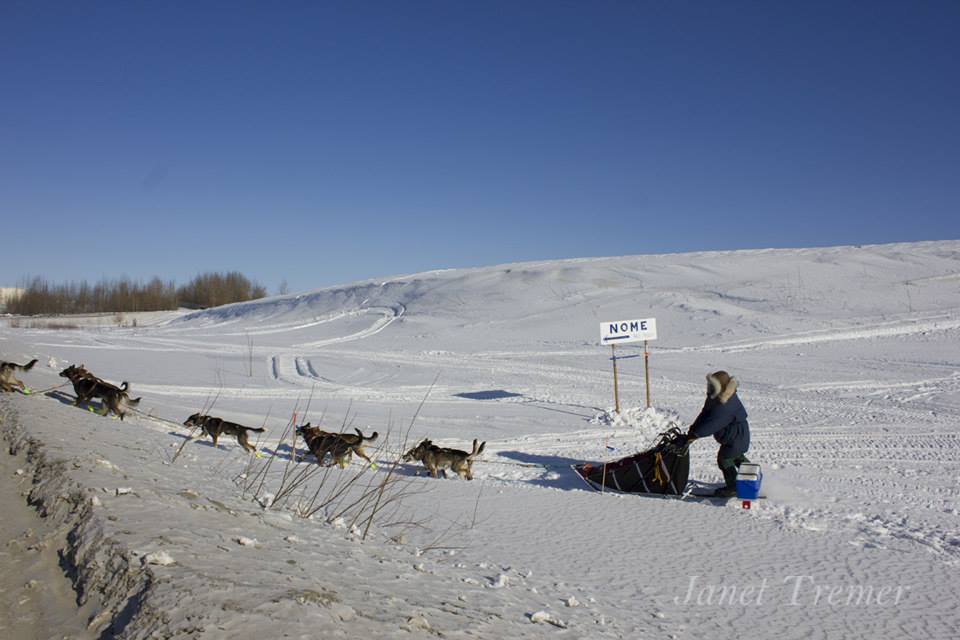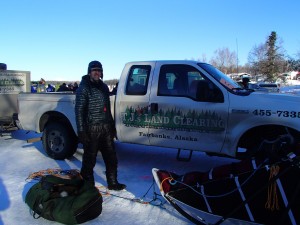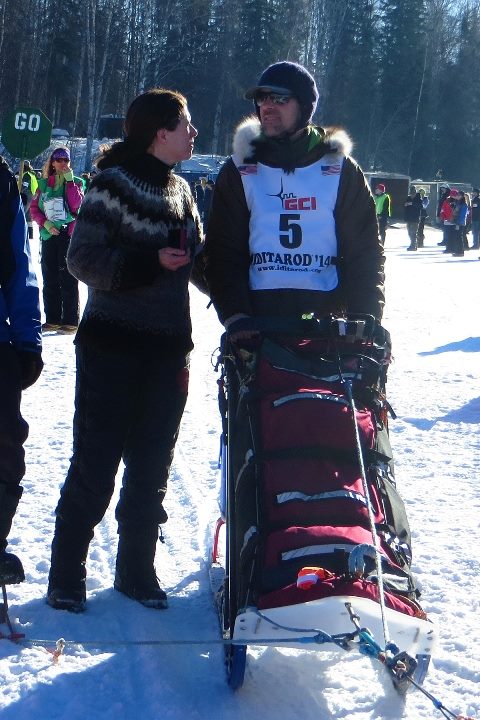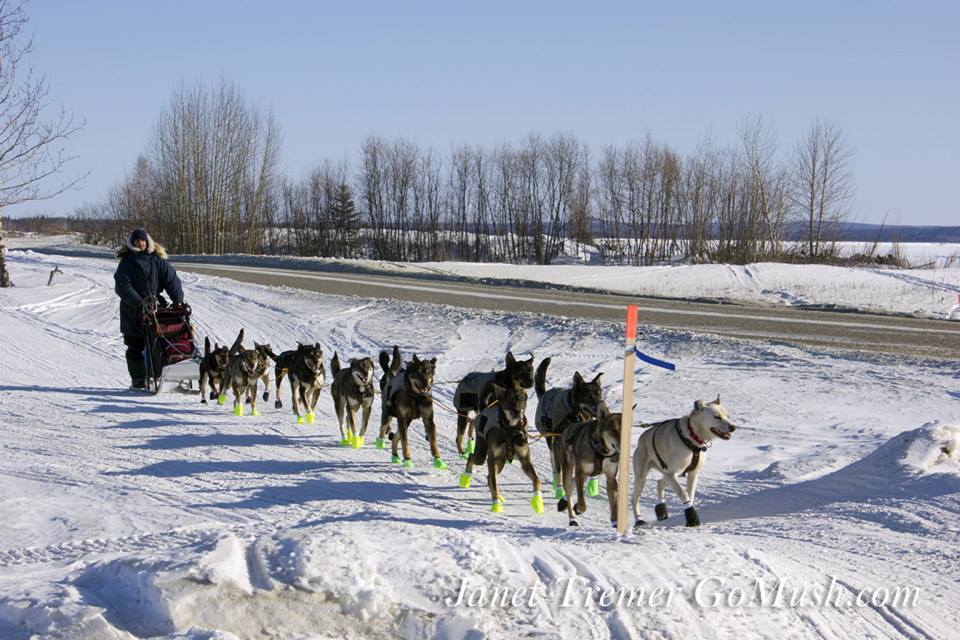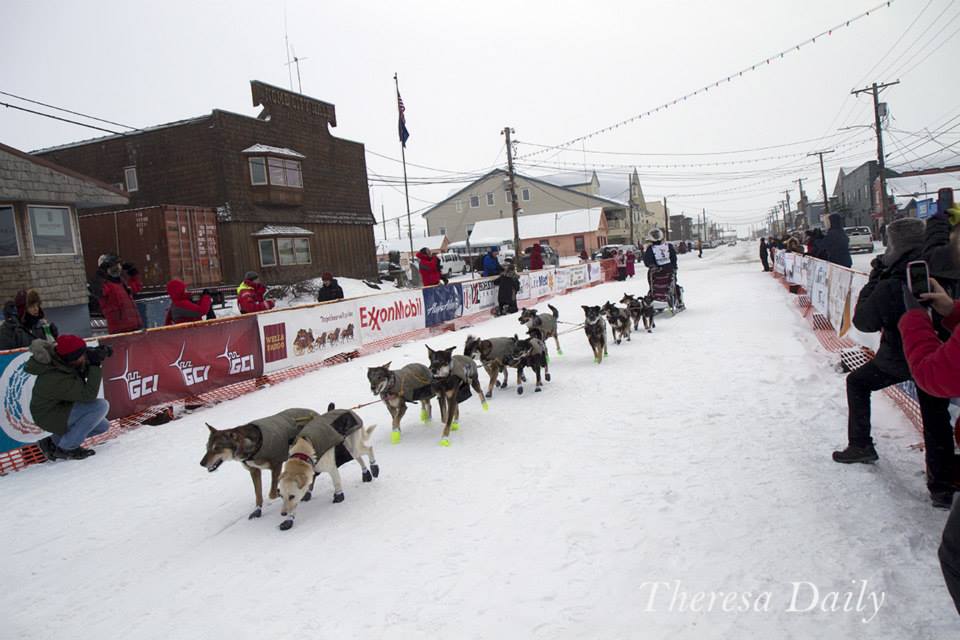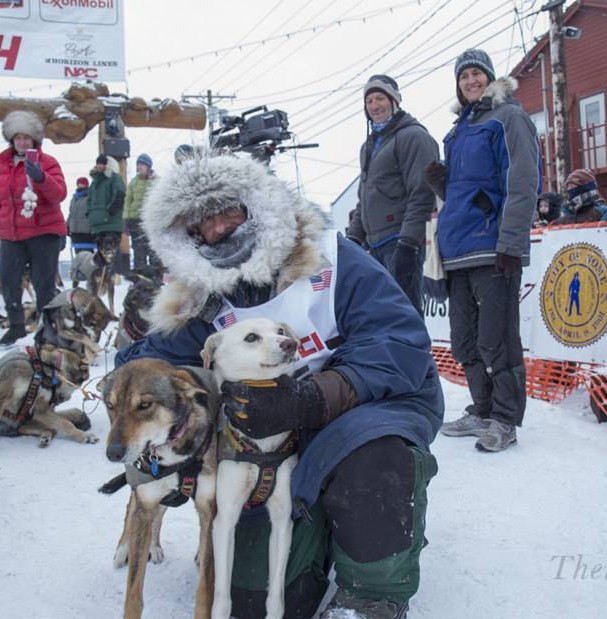“The excellency of every art is its intensity, capable of making all disagreeable evaporate.” John Keats
Much like the artist the Iditarod musher must live with a level of intensity that allows one to believe they can with great conviction travel across Alaska in the winter by dog team. No barrier to this goal no matter how firmly based in reality or sanity is given a second thought as you stay focused. I have been quoted as saying your entire world boils down to, “16 tails and the next mile of trail”. It is a level of intensity that does not leave room for trivial things like a social life, following current events, any ideas found on pintrest, or (more often then I like to admit) housekeeping. Most of the rest of the world melts away as you become singularly focused on one goal.
But once that goal is met, the intensity like so much hot air in a balloon is gone *poof* and you find yourself in a post race state often jokingly called PMS – post mushing syndrome. Or alternatively PISD – post Iditarod stress disorder. Call it what you want, it is the after race, what now? feeling that hits you after the mind numbing tired and bone rattling soreness wears off. Luckily the cure is springtime mushing in Alaska. Beautiful trail conditions in Interior Alaska and longer daylight hours are combining to give us the perfect prescription for dealing with PISD. Of course it has not been particularly conducive to blogging and emails…
And that is something I am dealing with right now. The long awaited post Iditarod Dew Claw Blog.
For an occurrence to become an adventure, it is necessary and sufficient for one to recount it. Jean-Paul Sartre
This year was certainly an adventure! There are enough articles devoted to the trail and brutal conditions on this years Iditarod. (If you missed the reports: there are some good photos and video at the Fairbanks NewsMiner article about the trail. And a good read called 5 Things to Know About Trail Conditions.)
Not to belittle how bad it was, Dan assures me it was BAD. But we are going to move past that and focus on the things that were in our control.
Like Dan’s sled. After years of crash testing I like to think in some small way I helped contribute to the design and building of a sled that can handle the Iditarod trail. With the exception of some repairs to the drag mat, the sled traveled from start to finish with no major problems. The rear bracket he designed to hold a cooler for dog food was easily removable; allowing him to take it off and pack everything securely inside the sled bag for more dangerous sections of trail. Dan was really pleased with how the sled handled, and if ever there was a test for a long distance sled; this was it. The custom bag for Dan’s race sled was made by Fairbanks locally owned Becker Sewing and Design.
The other thing in our control that we are really happy about is how the dog performed. This article by Terrie Hanke, Eye on the Trail: Unalakleet on Monday, made me very proud that all our leader training was paying off and Dan could drive the team through crowded checkpoints. The team posted fast times consistently throughout the race. And even at the finish they were animated and energetic. OK and I was also pretty proud at all the compliments we got on how friendly our dogs were. From vets to checkers to fans who came out to the start, the Dew Claw dogs won people over.
In any given race our goal is always simple – to run the team in front of you to the best of your ability. The team was well prepared, but many factors come into play when managing a team over 1000 miles. Not much unlike getting a large group of humans together for a conference, bringing teams together and the stress of travel can increase the risk that dogs can get a bit off. Early in the race the Dew Claw dogs were not 100% In Dan’s case it was nothing some extra rest and care could not cure, and that is exactly what he did.

Dan snacking the team on arrival in Galena. Thanks to Janet & Walt Tremer for the photos from Galena.
In general the rough trail conditions were much harder on mushers and sleds then dogs. The Alaska Dispatch did a article on the subject – Despite rough trail, dogs fared well in 2014 Iditarod. In addition they also did a very good piece in the Veterinary care of Iditarod sled dog on the trail – How volunteer vets care for Iditarod dogs along the 1,000-mile trail. Along with the wonderful trail Vets we also want to thank our friends TC & Dave at Odaroloc Kennel from helping pre-race and watching our dropped dogs once they get flown back to Anchorage.
The ability to drop dogs from the team and into the care of vets at checkpoints is infinitely important to team management. For instance Dan was able to send home a dog who had a slightly sore foot, not a serious injury. Later down the trail Bluebarb was not digesting her food well, so Dan felt it best for her not to go on with the team. By making the choice to drop a dog at the first sign of anything you can assure that dog will have a positive experience on the race trail, never being asked to do anything it was not capable of nor fit for. Ribdon is another case where he was showing signs that his back was getting sore, possibly from working so hard earlier in the race. But Dan was able to send him home early to recover, while still traveling down the trail with 13 strong happy dogs.
You can see an excellent assortment of photos taken by our friends at Go Mush – Janet & Walt Tremer and Theresa Daily. GO MUSH – 2014 Iditarod highlights
At the last checkpoint, White Mountain, Dan made the tactile decision to drop Sweet pea, a female who was going into heat, and could become a distraction to the boys on that last run. As well as ChaseUm, a male who had been pulling great but had not stayed as thick* so Dan decided to drop him as well and leave White Mountain with his top 11 dogs. Eleven hard pullers is a strong string to run with, and they would prove to be plenty of power for his final run to Nome.
*A term mushers use to mean dogs that hold good solid weight on long runs.
A wonderful photo of a frosty Dan and Dew Claw dogs, again with Orchid and BedBug in lead, as they make there way off the sea ice and into Nome. This was taken by the Teacher on the Trail and posted in her blog – Picture Perfect Spot.
His effort and care paid off in a team that was happy and strong at the end. Even passing teams in the last runs. KNOM Radio spotters saw Dan passing Katherine Keith in the final miles of the trail, you can read there report and see a good photo of the teams together outside of Nome at the KNOM Blog. However word did not get to the folks with the microphone at the chute. As we watched Dan come up front street the announcers were still talking about the expected musher Keith. Once they realized their mistake a quick change was made and a little giggle had by Dan fans who had seen his bib number and recognized sweet Orchid in lead.
Dan and everyone here at Dew Claw wants to congratulate Katherine Keith, her pure joy at the finish line was a testament to her hard work and determination paying off. And in my mind will always represent the achievement she and every musher who met this years trail deserves to feel.
To All the Mushers & Team in the 2014 Iditarod ~ we send our heartfelt congratulations!
To the Vets, Officials, and Volunteers ~ Mush Thanks for your efforts and support!
To our friends and family (the major army of support that made this mission possible, and subject of a upcoming blog post) ~ You are amazing, we love you!
And last but not least, the wonderful Sponsors and Checkpoint Sponsors who have believed in and encouraged us ~ Your generous support make it possible for us to care for our dogs and compete at this level, and we can not thank you enough.
Dan with his leaders BedBug & Orchid under the burled arch in Nome, Iditarod 2014. Photo Theresa Daily www.gomush.com


